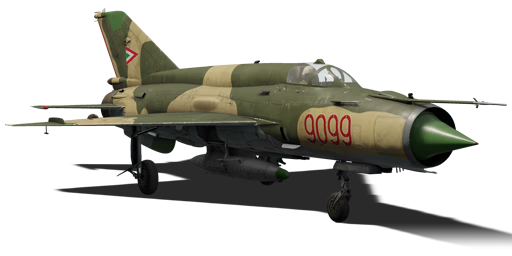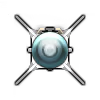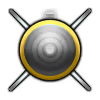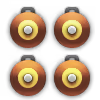




In 1977, the Hungarian People's Republic Air Force started receiving the MiG-21bis to supplement their fighter-interceptor fleet alongside their recently acquired MiG-21MF fleet. Hungary would receive exactly 63 of the type, with 39 of them being the "Fishbed-L" variant, equipped with the Lazur-M GCI (Ground Controlled Intercept) guidance system. The other 24 would be the "Fishbed-N" variant, equipped with the Polyot-OI landing system instead. To differentiate the two variants, the aircraft received unique names in export service, with the Polyot equipped variant being called MiG-21bis-SAU (Sistema Avtomaticheskovo Upravleniya). The only way to visually tell apart the two aircraft is by a single antenna under the forward fuselage, which is missing on one of the variants due to its different guidance system, or by the countermeasure system; the Lazur equipped MiG-21bis had the wiring required for build-in ASO-2 countermeasure dispensers in the rear of the fuselage, while the Polyot equipped versions did not have this wiring and required an external SPS-141 countermeasures pod.
Introduced in Update "Alpha Strike", the MiG-21bis-SAU (Italy) is a Hungarian aircraft found in the Italian tech tree, and builds upon the playstyle of the previous MiG-21MF in the tree, relying a lot more on its incredible flight performance to utilize hit-and-run tactics against unsuspecting enemies, and to dogfight its way out of most trouble it finds its way in. The MiG-21bis may have great flight performance and engine power, but lacks in most other departments. Being a delta wing, its energy retention is abysmal, although that problem is slightly mitigated by the very powerful engine, which can quickly regain speed if the aircraft safely disengages and flies in a straight line. The aircraft's avionics and suspended weaponry is where the largest let-down is. While other aircraft at your battle rating range will have pulse-doppler radars, powerful missiles with IRCCM, and very informative RWR systems, the MiG-21bis has none of that. Instead, you get what is easily one of the worst dedicated radar sets at this battle rating, subpar missiles, a complete lack of BVR capability, and the weak SPO-10 RWR system. All in all, the MiG-21bis falls under the same loop of the late Fishbed family, relying a lot more on the skill of the pilot due to its strong flight performance and weak systems. It is truly a hard plane to learn, but a very rewarding one if mastered correctly. One must keep in mind in mixed battles that the weight and drag of the SPS-141 Countermeasures pod makes the Bis-SAU very slightly (so slightly that its barely noticeable) worse in flight performance than the Lazur equipped versions with built-in flares, so avoid extended dogfights with Lazur equipped Fishbeds.
flaps
flaps
flaps
brake
| Belt | Belt filling | Armor penetration (mm) at a distance: | |||||
|---|---|---|---|---|---|---|---|
| 10 m | 100 m | 500 m | 1000 m | 1500 m | 2000 m | ||
| HEFI-T/AP-I/HEF-I | 31 | 29 | 21 | 15 | 10 | 7 | |
| HEF-I/AP-I/AP-I/AP-I | 31 | 29 | 21 | 15 | 10 | 7 | |
| HEFI-T/HEF-I/HEFI-T/HEF-I/AP-I | 31 | 29 | 21 | 15 | 10 | 7 | |
| AP-I/HEF-I/HEF-I | 31 | 29 | 21 | 15 | 10 | 7 | |
| Name | Weight | Slot | ||||
|---|---|---|---|---|---|---|
| 75.3 kg |  |  |  |  | ||
| 75.3 kg |  |  |  |  | ||
| 90.6 kg |  |  |  |  | ||
| 44 kg |  |  |  |  | ||
| 2 × | 88 kg |  |  | |||
| 235 kg |  |  |  |  | ||
| 16 × | 110.2 kg |  |  |  |  | |
| Drop tank (490 liters.) | 49 kg |  |  |  | ||
| 32 × | 225.5 kg |  |  | |||
| 4 × | 456 kg |  |  | |||
| 227 kg |  |  | ||||
| 508.3 kg |  |  | ||||
| 374 kg |  |  | ||||
| 64 × Сountermeasures | 5.8 kg |  | ||||












Flight performance | |
|---|---|
Survivability |
|---|
Weaponry | |||
|---|---|---|---|